#PlanetaryDefense
Text
Laser Starship will stop Asteroidea’s?
I’m sure you have heard about the life-threatening encounters the Earth has every year. Luckily, most of the encounters don’t impact the lives of average humans. How long will your luck hold out???
The next video shows how useful the SpaceX Starship could be if or after it reaches orbit regularly.
America’s NEW Space Laser Weapon that shouldn’t be so new?
I start the above video mid-way, when…

View On WordPress
0 notes
Photo

Aaand…Part 2 of my #nasasocial experience has landed! (see what I did there? 😄) click the link in my bio to see the folks I met and the things we saw. I encourage you to apply to attend a future event! #DARTMission #planetarydefense https://www.instagram.com/p/CjTKZz0ubGx/?igshid=NGJjMDIxMWI=
0 notes
Photo

In 20 minutes, we avenge the dinosaurs (kidding). Watch the mission in real-time via NASA Live! #DARTMission #Dimorphos #PlanetaryDefense #Asteroids https://www.instagram.com/p/Ci_MXlUuL89/?igshid=NGJjMDIxMWI=
0 notes
Link
"NASA effectively hit a super-fast bullet with a super-fast bullet, hitting that target at over a million miles from Earth. They hoped to change its orbit by 73 seconds. They changed the orbit by 32 minutes, minutes, not seconds."
0 notes
Photo

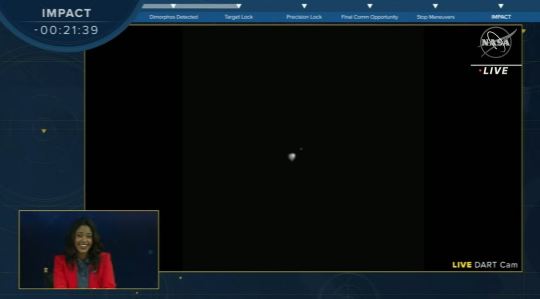

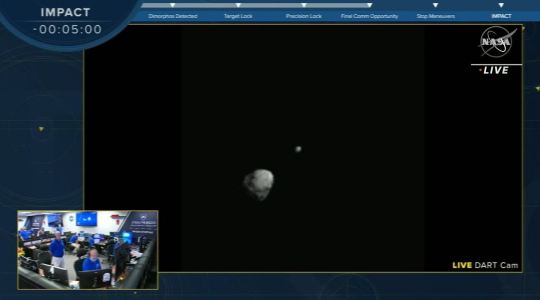
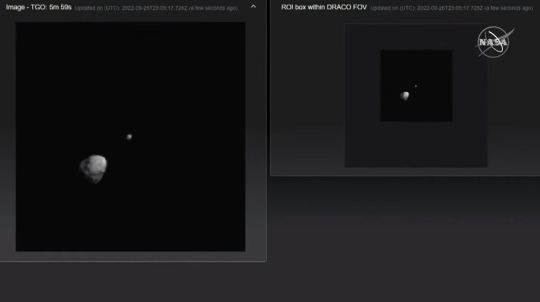




dart - dimorphos . https://www.nasa.gov/planetarydefense/dart/dart-news
5 notes
·
View notes
Text
Sci-Fi 5: A Close Call with US19720810 - August 10, 1972

The "great daylight fireball" was a hunk of space rock that came dangerously close to the Earth on August 10, 1972. How accurate are those movies that imagine what would happen if one slammed into our home planet? Hear what the science says about science fiction and #planetarydefense on Sci-Fi 5. https://sci-fi-5.libsyn.com/a-close-call-with-us19720810-august-10-1972
Read the full article
0 notes
Text
Katyanna Quach - NASA's DART kicked up swarm of 37 boulders after Dimorphos asteroid crash:
https://www.theregister.com/2023/07/21/dart_dimorphos_ejection/
#Dimorphos #Didymos #DoubleAsteroidRedirection #AsteroidRedirection #Asteroid #DART #KineticImpactor #NASA #PlanetaryDefense #Astronomy
0 notes
Video
youtube
O ASTEROIDE DIMORPHOS AGORA TEM 2 CAUDAS E PARECE UM COMETA!!!
ASSINE AGORA O SPACE TODAY PLUS, R29,90 POR MÊS, MENOS DE 1 REAL POR DIA, PARA VOCÊ ACOMPANHAR, SÉRIES, DOCUMENTÁRIOS, CONTEÚDOS EXCLUSIVOS!!! https://quero.plus Duas caudas de poeira ejetadas do sistema de asteroides Didymos-Dimorphos são vistas em novas imagens do Telescópio Espacial Hubble da NASA , documentando as consequências remanescentes do impacto do Double Asteroid Redirection Test (DART) da NASA. A espaçonave DART impactou Dimorphos, uma pequena lua de Didymos, em 26 de setembro em um teste de defesa planetária para mudar a órbita de Dimorphos colidindo com ela. Os dados atuais mostram que o DART encurtou a órbita original de 11 horas e 55 minutos do Dimorphos em torno de Didymos em cerca de 32 minutos. Observações repetidas do Hubble nas últimas semanas permitiram aos cientistas apresentar uma imagem mais completa de como a nuvem de detritos do sistema evoluiu ao longo do tempo. As observações mostram que o material ejetado, ou “ejecta”, expandiu e diminuiu de brilho com o passar do tempo após o impacto, em grande parte como esperado. A cauda gêmea é um desenvolvimento inesperado, embora um comportamento semelhante seja comumente visto em cometas e asteróides ativos. As observações do Hubble fornecem a imagem de melhor qualidade da cauda dupla até o momento. Após o impacto, o Hubble fez 18 observações do sistema. As imagens indicam a segunda cauda formada entre 2 e 8 de outubro. Nesta imagem, o DART impactou o sistema Didymos-Dimorphos na direção das 10 horas. A relação entre a cauda semelhante a um cometa e outras características ejetadas vistas em vários momentos em imagens do Hubble e outros telescópios ainda não está clara, e é algo que a equipe de investigação está trabalhando para entender. A cauda do norte é recentemente desenvolvida. Nos próximos meses, os cientistas examinarão mais de perto os dados do Hubble para determinar como a segunda cauda se desenvolveu. Há uma série de cenários possíveis que a equipe investigará. FONTE: https://www.nasa.gov/feature/nasa-s-hubble-spots-twin-tails-in-new-image-after-dart-impact #DART #DIMORPHOS #PLANETARYDEFENSE
0 notes
Text
Oh my NASA gonna crash an Asteroid todayyy.. 😱😱😱😱.. ofcourse my little mind would have played I don't wanna miss a thing cause this is like watching Armageddon.. 🫢and then if something bad happens I'm gonna use my favorite movie quote.. "You and Your men are the biggest mistake in the history of NASA".. 🫢🫢🫢😂🤣😂🤣 I'm sorry NASA im a dork krokok wahahahahahhahaha🥹😂
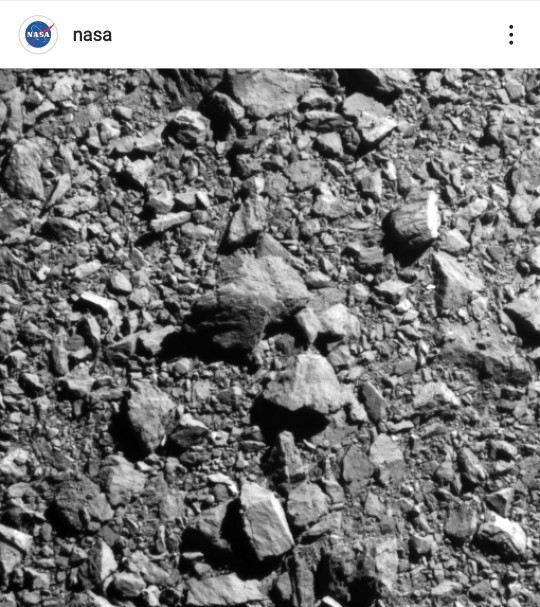
Congratulations NASA on your successful #DARTmission collision course with the Asteroid Dimorphos.. This is really big for Humanity to avoid one Space catastrophe at a time by changing it's trajectory.. This is a big project.. Proud of you guys.. Thank u for working hard.. 😭😭😭⚡⚡⚡❤️❤️❤️
#PlanetaryDefense🌏
0 notes
Text
Every day is Asteroid Day at NASA
It’s International Asteroid Day, and today we’re talking about everything asteroids! Although there are no known threats for the next 100 years, our Planetary Defense experts are constantly finding, tracking, and monitoring near-Earth objects to protect our home planet.
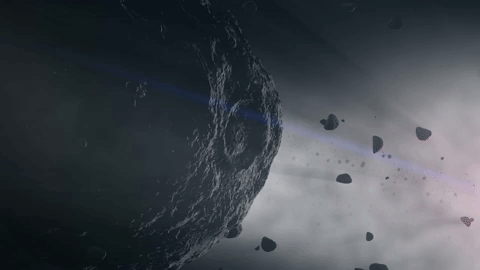
Asteroids are rocky remnants from the beginning of our solar system, and as of today, 26,110 near-Earth asteroids have been discovered!

So how do we spot these near-Earth objects? Let’s watch and see:
youtube
In addition to tracking and monitoring asteroids, we are also launching several missions to study these rocky relics. By studying asteroids, we can better understand the formation of our solar system. Here are some exciting missions you can look forward to:
OSIRIS-REx: Returning a Sample from Asteroid Bennu
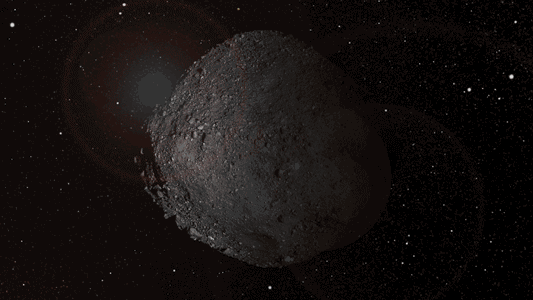
Last year, our OSIRIS-REx mission successfully captured a sample of asteroid Bennu, a 4.5-billion-year-old asteroid the size of the empire state building.
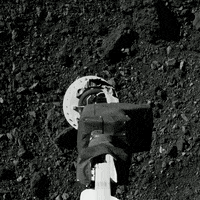
Currently, OSISRIS-REx is making its long journey home carrying this sample as it returns to Earth in 2023.
Psyche: A Journey to a Metal World
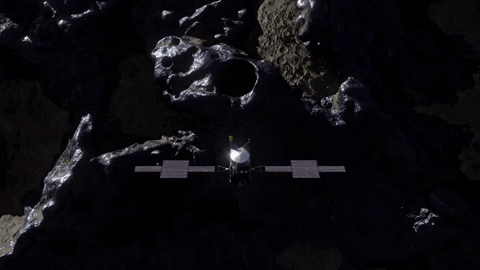
Our Psyche mission will journey to a unique metal asteroid orbiting the Sun between Jupiter and Mars.

What makes the asteroid Psyche unique is that it appears to be the exposed nickel-iron core of an early planet, one of the building blocks of our solar system. Deep within rocky, terrestrial planets - including Earth - scientists infer the presence of metallic cores, but these lie unreachably far below the planets' rocky mantles and crusts. Because we cannot see or measure Earth's core directly, Psyche offers a unique window into the violent history of collisions and accretion that created terrestrial planets.
Lucy: Studying the Trojan Asteroids
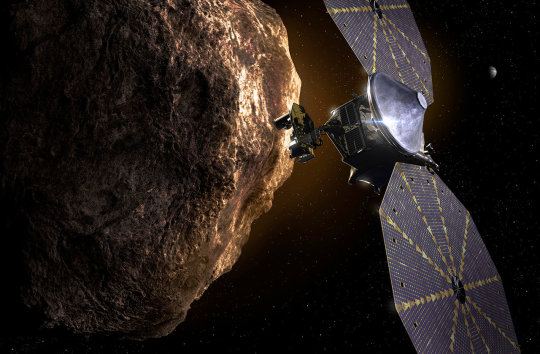
Launching this year, our Lucy mission will be the first mission to study the Trojans, a group of asteroids that share Jupiter’s orbit around the Sun. Time capsules from the birth of our Solar System more than 4 billion years ago, the swarms of Trojan asteroids associated with Jupiter are thought to be remnants of the primordial material that formed the outer planets.

The mission takes its name from the fossilized human ancestor (called “Lucy” by her discoverers) whose skeleton provided unique insight into humanity's evolution. Likewise, the Lucy mission will revolutionize our knowledge of planetary origins and the formation of the solar system.
DART: Double Asteroid Redirection Test

Launching this year, our DART mission is a planetary defense driven test of technologies and will be the first demonstration of a technique to change the motion of an asteroid in space.
The destination of this mission is the small asteroid Dimorphos, which orbits slowly around its larger companion Didymos. Dimorphos is referred to as a moonlet since it orbits a larger asteroid.
The DART spacecraft will achieve the kinetic impact deflection by deliberately crashing itself into the moonlet. The collision will change the speed of the moonlet in its orbit around the main body by a fraction of one percent, but this will change the orbital period of the moonlet by several minutes - enough to be observed and measured using telescopes on Earth.
At NASA, every day is asteroid day, as we have missions exploring these time capsules of our solar system and surveying the sky daily to find potential hazards. We, along with our partners are watching the skies 24/7/365, so rest assured! We're always looking up.
Make sure to follow us on Tumblr for your regular dose of space!
#AsteroidDay#PlanetaryDefense#MissionToPsyche#LucyMission#DARTMission#OSIRISREx#ToBennuAndBack#space#solarsystem#science#asteroid#technology#Earth
2K notes
·
View notes
Photo
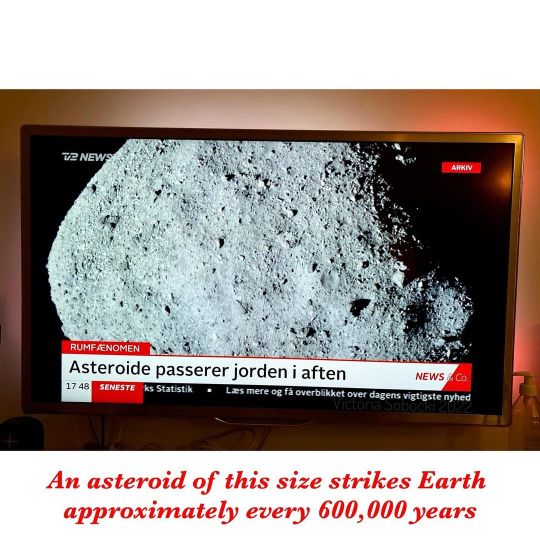
Don’t Look Up? 🤫☄️ A rare phenomenon happens tonight! “A large stony asteroid will safely pass Earth on January 18, 2022. Its estimated size is around 3,280 feet (about 1 km or .6 of a mile), around 2 1/2 times the height of the Empire State Building. As you can see from this asteroid’s label – (7482) 1994 PC1 – we’ve known about it since 1994. It is classified as a Potentially Hazardous Asteroid due to its size and relatively close flybys of our planet. An asteroid of this size strikes Earth approximately every 600,000 years.” Near-Earth asteroid 1994 PC1 (~1 km wide) is very well known and has been studied for decades by our #PlanetaryDefense experts. Rest assured, 1994 PC1 will safely fly past our planet 1.2 million miles away next Tues., Jan. 18. Track it yourself here: https://eyes.nasa.gov/apps/asteroids/ Live video: https://www.youtube.com/watch?v=xLrj1xa43pw Text source: https://earthsky.org/space/asteroid-1994-pc1-closest-jan-18-2022/ . . . . . . . . . . . . . . #asteroid1994PC1 #asteroid #NASA #planet #space #outerspace #gravity #spacetime #telescope #TV #RobertMcNaught #AsteroidWatch #xrisk #existentialrisk #governance #curious #1994PC1 #astronomer #astronomy #universe #interesting #science #nature #Denmark #curiosity #DontLookUp #McNaught #unique #cosmos (at Outer Space) https://www.instagram.com/p/CY4wYvqsVSN/?utm_medium=tumblr
#planetarydefense#asteroid1994pc1#asteroid#nasa#planet#space#outerspace#gravity#spacetime#telescope#tv#robertmcnaught#asteroidwatch#xrisk#existentialrisk#governance#curious#1994pc1#astronomer#astronomy#universe#interesting#science#nature#denmark#curiosity#dontlookup#mcnaught#unique#cosmos
0 notes
Photo

DART Mission NASA’s 1st planetary defense test mission! Want to learn a little more about this trailblazing mission? Let’s go! Make sure to follow my coverage on this upcoming event Monday, 9/26. I’ll be touring @johnshopkinsapl and will be there for the the spacecrafts encounter with the asteroid that evening. Make sure to follow my adventures on my IG stories! In the meantime, here is some helpful information about the mission. Enjoy! The Double Asteroid Redirection Test (DART) Developed and led for NASA by the Johns Hopkins Applied Physics Laboratory (APL) in Laurel, Maryland, DART will demonstrate the planetary defense technique known as kinetic impact. The DART spacecraft, which launched on November 24, 2021, will slam into an asteroid and shift its orbit, taking a critical step in demonstrating ways to protect our planet from a potentially hazardous impact. DART’s target is a binary asteroid system consisting of Didymos (Greek for “twin”), about a half-mile across, and its smaller companion called Dimorphos (Greek for “two forms”), about 530 feet across. DART will use an autonomous targeting system to aim itself at Dimorphos. The spacecraft, roughly the size of a small car, will strike the smaller body at about 4 miles per second on September 26, 2022. Telescopes on Earth will observe the asteroid system and measure the change in Dimorphos’ orbit around Didymos. A ride-along CubeSat named LICIACube, built by the Italian Space Agency, will separate from DART before impact to observe the collision. Info source: Johns Hopkins APL #NASASocial #DARTmission #PlanetaryDefender #PlanetaryDefense https://www.instagram.com/p/CiveXYWplvj/?igshid=NGJjMDIxMWI=
0 notes
Text
(2021 October 20) Poetry of the Night: A Nightwatchman’s Journey, by Dr. David Levy

AIAA LA-LV Section (Town Hall) e-Meeting (on Zoom)
Wednesday, October 20, 2021, 7 PM PDT (US/Canada)
Poetry of the Night: A Nightwatchman’s Journey, by Dr. David Levy
YouTube AIAA LA-LV Channel: https://www.youtube.com/channel/UCCJrx_vB7oxnU6T1yinEapg
Video Recording on YouTube: https://youtu.be/kJZsigLEbaA
Event RSVP and Information Page: https://conta.cc/3DdkUmp
————————————————————-
AIAA LA-LV Podcasts (audio): (also see the audio recording upload below)
https://rss.com/podcasts/aiaa-losangeles-lasvegas/301705/ (This event)
https://rss.com/podcasts/aiaa-losangeles-lasvegas/
https://podcasts.google.com/feed/aHR0cHM6Ly9tZWRpYS5yc3MuY29tL2FpYWEtbG9zYW5nZWxlcy1sYXN2ZWdhcy9mZWVkLnhtbA
————————————————————-
Event Calendar
http://events.r20.constantcontact.com/calendar/monthview?eso=0010gqoU-_jblZTmCh7qkkm8w%3D%3D&llr=p9tbt6cab
Join Mailing List
https://lp.constantcontactpages.com/su/FnG0zoy
Upcoming Events
https://aiaa-lalv.org/events
Join AIAA Membership
https://aiaa.org/membership
AIAA LA-LV and AIAA Websites
https://www.aiaa-lalv.org/
https://aiaa-lalv.org/events
https://engage.aiaa.org/losangeles-lasvegas
https://engage.aiaa.org
AIAA LA LV 2021 October 20 Poetry of the Night A Nightwatchman Journey by Dr David H Levy
AIAA LA LV 2021 October 20 Poetry of the Night A Nightwatchman Journey by Dr David H Levy.mp3
Read the full article
#Aerospace#AIAA#Comet#Dr.DavidH.Levy#EnglishLiterature#Impact#Jupiter#LasVegas#LosAngeles#PlanetaryDefense#Poetry#Shakespeare#Shoemaker-Levy9#Space
0 notes
Text

Planetary science program content
#Planetaryscienceresearch#Planetarydefense#Lunar#discovery and exploration of the solar system#new frontiers#mars exploration#outer planets#oceanworlds
0 notes
Photo
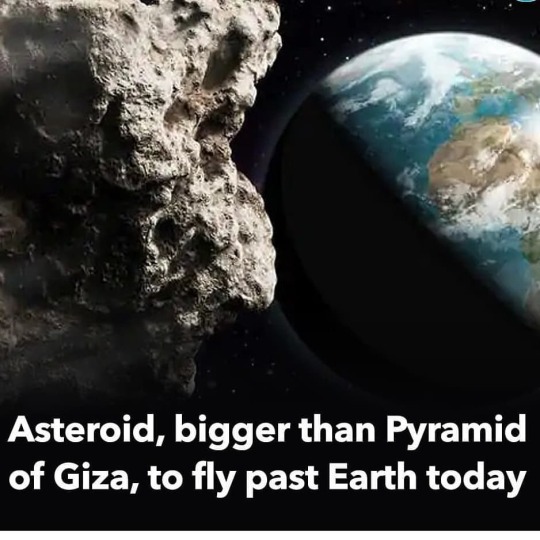
#Stargazers will be part of an exciting #celestial moment as an #asteroid will pass by #Earth on September 6. Asteroid (465824) 2010 FR is between 120-270 metres long and could be bigger than the #Pyramid of #Giza in Egypt. The asteroid will be 7.5 million kilometres from us but the National Aeronautics and Space Administration’s (#Nasa’s) Asteroid Watch has debunked theories that it might be close enough to cause significant damage. “Our #PlanetaryDefense experts are not worried about asteroid 2010 FR and you shouldn’t be either because it has zero chance of hitting Earth. Earth globe #americas It will safely pass by our #planet on Sept. 6 more than 4.6 million miles away—that’s more than 19 times the distance of our #Moon!” Asteroid Watch tweeted. The virtual #telescope project initiative also said on their website that despite its size, the asteroid will not be able to cause any damage and people will be safe. Tap the link in bio to read more. #asteroids #spacewatch #earthplanet #SpaceScience #nasa🚀 #Universe #StaySafe #spacefacts #SpaceResearch #Science #astrophysics #physicsfun Reposted from @hindustantimes https://www.instagram.com/p/CEytGmmBDmo/?igshid=nc6tpyy2mxo4
#stargazers#celestial#asteroid#earth#pyramid#giza#nasa#planetarydefense#americas#planet#moon#telescope#asteroids#spacewatch#earthplanet#spacescience#nasa🚀#universe#staysafe#spacefacts#spaceresearch#science#astrophysics#physicsfun
0 notes
Photo

Current iteration of #PictographsPlayZoneForEarth #pencil #spraypaint and #acrylic #painting on #paper. #Ottawa #planetarydefense #art #pictographs #earth #powerlines #NeoWoodlands (at Kanata, Ontario) https://www.instagram.com/p/BsmwKpwFdca/?utm_source=ig_tumblr_share&igshid=1exa09pofelp3
#pictographsplayzoneforearth#pencil#spraypaint#acrylic#painting#paper#ottawa#planetarydefense#art#pictographs#earth#powerlines#neowoodlands
0 notes